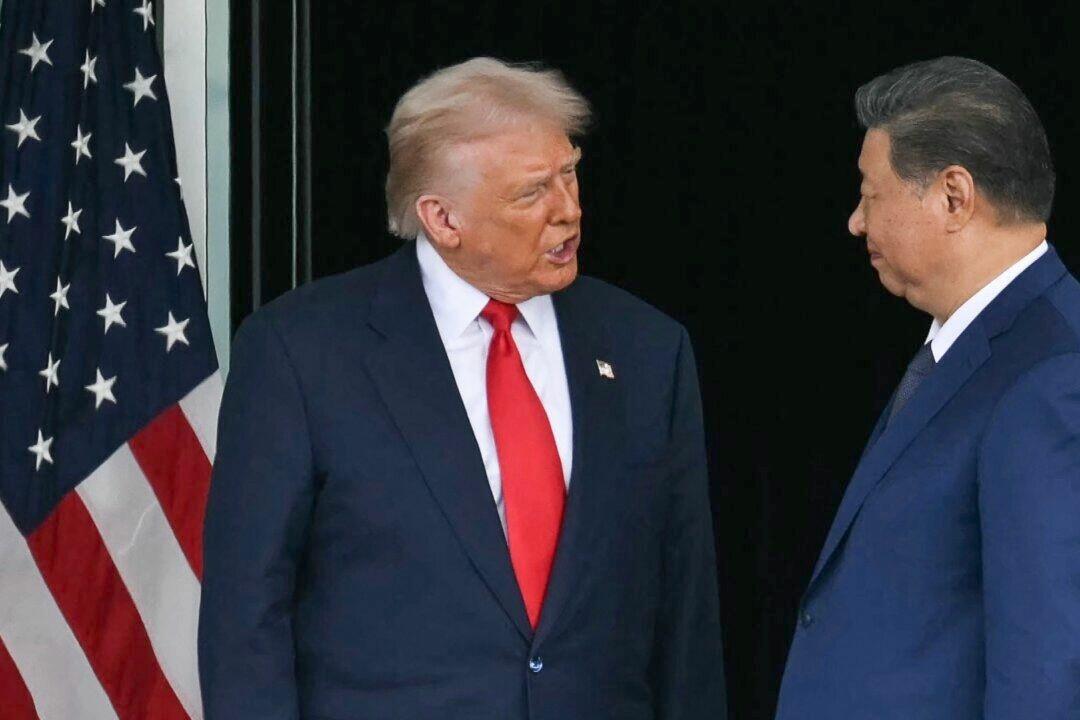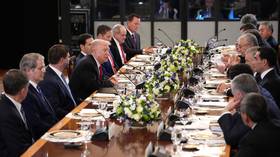Adam Chajewski
INTRODUCTION: TREATIAL POLICY
Poland maintains diplomatic relations with 195 entities (according to the Ministry of abroad Affairs) [1), or 198 (according to the Institute of fresh Europe) [2[A] With many of them has signed a multum of contracts, agreements, protocols, arrangements... [3] Regarding Lithuania's interesting text, Adam Banaszkiewicz [4In writing about the Polish-Lithuanian agreements, he referred to 43 specified acts. Only a fewer of the above mentioned countries have Poland signed Treaties on... Renata Shafarz [5in the 3rd Republic of that kind Treaties, listed 18 of them. [B] The set of papers presented by her raises serious concerns – both formal [C] as well as substantive.
As far as the second are concerned, it is astounding to be nonchalance in calling a partner an agreement. And so, in 2 cases there are common names of the countries of Poland's partners (Romania, Ukraine). The usage of common country names in diplomacy is, to put it mildly, not elegant, and in authoritative papers definitely not on the spot.
There are besides no consequences in the designations of the name Republic. They are in the adjective version (Hungarian Republic, Estonian Republic, Lithuanian Republic, ...), in the noun version in the denominator (Republic of Belarus, Moldova) and in the noun version in the complement (Republic of Bulgaria, Georgia, Uzbekistan).
It would seem that specified nonchalance is not fit for appropriate diplomacy. With respect to the diplomacy of the 3rd Republic, this is most likely a request for growth. [D]
The selection of entities with which Poland has signed treaties and with which it has not signed them is astonishing. There's truly no logic here. Poland has a treaty with Uzbekistan, and is not with Azerbaijan, Kyrgyzstan, Tajikistan, Turkmenistan and the most crucial Kazakhstan. Poland has treaties with Balkan countries and is not with Scandinavian countries. Poland has treaties with Georgia and Moldova and has no US, UK, China, India, Indonesia, Brazil, Egypt, Nigeria – 1 could calculate and calculate. And there is no indication that Poland suffered any tangible damage, whether political or economic, or in prestige.
In fact, the only reason for negotiating the treaty, apart from providing diplomats and experts with prestigious activities – is to effort to establish common relations in a fresh political situation, or even in a fresh geopolitical situation, in which Poland and countries bordering it at the turn of the 1980s and 1990s.
This fresh political situation is the request to deal with the effects of the Ribbentrop-Molotov Pact, in fact with the effects that are an integral part of it. Secret Additional Protocol. [6]
This fresh geopolitical situation is, as he described in his 2005 state-of-state message, Vladimir Vladimir Putin, “the top geopolitical disaster of the 20th century.”7], meaning the territorial retreat of Russia to the second half of the 17th century. [E]
This arrangement of relations should include issues specified as: borders and territories; restitution of cultural goods and non-proprietary (in the case of this text of non-lithuanisation) left behind; reparations and compensation for individuals, social organizations and the state (in the case of this text of the Republic of Poland); the choice of citizenship and the place of settlement. There should be absolute guarantees in the treaty for the rights of common minorities (in the case of this text of Poles in Lithuania and Lithuania in Poland); and (not necessarily, but justifiedly) questions of historical events (in the case of this Lithuanian text – according to today's communicative – speech of hatred towards Poles and Poland).
Photo. Lithuania, Vilnius, 26.04.2014 president of Wales (L) and president of the Republic of Lithuania Algirdas Brazauskas (P) signed a treaty on friendly relations and good neighbourly cooperation. Photo: PAP/M. Belina-Brzozowski
ARRANGEMENTS:
Note: access to all online posts, including those in COMMENTS, 26.04.201224.
[1] Ministry of abroad Affairs [RP], ‘PVomiting with which Poland maintains diplomatic relations‘ https://www.gov.pl/web/diplomacy/entities-with-whose-Polish-holds-diplomatic relations.
[2] fresh Europe Institute, "Polish embassies and typical offices worldwide, 01.03.2024., https://ine.org.pl/polskie-ambasada-i-presentatives-in-the-world/.
[3] e.g. Treaty between the Republic of Poland and the national Republic of Germany to confirm the existing border between them, signed in Warsaw on 14 November 1990., OJ 1992 No 14, item 55.
[4] Banashkiewicz Adam, «Treaties and key global agreements concluded by Poland with the Republic of Lithuania from 1991 to 2011“East Research”, 7, 2013. pp. 77-99., http://bazhum.muzhp.pl/media//files/East/Eastresearch-r2013-t7/Eastresearch-r2013-t7-s77-99 Eastresearch-r2013-t7-s77-99.pdf.
[5] Shafarz Renata, "Taxon relations of the Republic of Poland. fresh quality from 1989 to 2000’, “Legal Studies” 2003, z. 2, p. 5-50., see Bibliography, https://magazines.inp.pan.pl/index.php/sp/article/view/2795.
[6] see: Chajewski Adam, “KThe consequences of the Ribbentrop–Molotov Pact in Polish and Baltic policies in the late 1980s and 1990s“Studium Vilnius A”, vol. 16, Vilnius 2019. pp. 52-56.
[7] see: Marciniak Wojciech, “Reflections on historical reminiscences and basic objectives of Russia's global policy in Vladimir Putin's speech of 18 March 2014.Łódź University, p. 7 (153); file:///C:/Users/Adam/Downloads/Reflexje_o_historice_reminisce.pdf; also: Portal directly.pl, "Putin: The dissolution of the USSR is simply a disaster (Actl.), 25.04.2005.; https://www.wprost.pl/world/75943/putin-fall-zsrr-to-catastrofa-aktl.html.
COMMENTS:
A – The said “Entities“ is 193 states – members of the United Nations, the Chinese Republic (Taiwan), the Holy See, the Palestinian National Authority and the Sovereign Military Order of Malta. full 197 ‘Subjects’.
B – Renata Szafarz in his work lists 2 Treaties concluded by the II Republic (with Turkey and the Hellenic Republic), 2 Agreements concluded by the Polish People's Republic (with Japan and the national Republic of Germany) and 18 Treaties /Agreements signed by the III Republic, namely:
- Treaty between the Republic of Poland and the Russian Federation on friendly and good neighbourly cooperation, drawn up in Moscow on 22 May 1992, OJ 1993 No 61, item 291.
- the Treaty between the Republic of Poland and the Republic of Belarus on good neighbourliness and friendly cooperation, signed in Warsaw on 23 June 1992, OJ 1993 No 118, item 527.
- the Treaty between the Republic of Poland and the Republic of Estonia on Friendly Cooperation and the Baltic Neighbourhood, drawn up at Tallinn on 2 July 1992, OJ 1993 No 121, item 536.
- the Treaty between the Republic of Poland and the national Republic of Germany on good neighbourhood and friendly cooperation, signed at Bonn on 17 June 1991, OJ 1992 No 14, item 56.
- Treaty between the Republic of Poland and the Republic of Lithuania on friendly relations and good neighbourly cooperation, drawn up at Vilnius on 26 April 1994, OJ 1995 No 15, item 71.
- the Treaty between the Republic of Poland and the Republic of Latvia on relationship and cooperation, drawn up at Riga on 1 July 1992, OJ 1993 No 114, item 502.
- Treaty between the Republic of Poland and the Republic of Moldova on relationship and cooperation, drawn up at Warsaw on 15 November 1994, OJ 1996 No 76, item 363.
- Treaty between the Republic of Poland and Ukraine on good neighbourliness, friendly relations and cooperation, drawn up in Warsaw on 18 May 1992, OJ 1993 No 125, item 573.
- the Treaty on relationship and Solidarity between the Republic of Poland and the French Republic, drawn up at Paris on 9 April 1991, OJ 1992 No 81, item 415.
- Treaty on relationship and Cooperation between the Republic of Poland and the Italian Republic, drawn up in Warsaw on 11 October 1991, OJ 1996 No. 52, item 226.
- the Treaty on relationship and Cooperation between the Republic of Poland and the Kingdom of Spain, drawn up at Madrid on 26 October 1992, OJ 1995 No 18, item 84.
- the Treaty on relationship and Cooperation between the Republic of Poland and the Hellenic Republic drawn up at Athens on 12 June 1996, OJ 1998 No 129, item 852.
- the Treaty on relationship and Cooperation between the Republic of Poland and the Republic of Georgia, drawn up at Tbilisi on 20 April 1993, OJ 2000 No 2, item 7.
- the Treaty on relationship and Cooperation between the Republic of Poland and the Republic of Uzbekistan, drawn up at Warsaw on 11 January 1995, OJ 1996 No 26, item 115.
- Agreement between the Republic of Poland and the Czech and Slovak Federative Republics on a good neighbourhood, solidarity and friendly cooperation drawn up in Krakow on 6 October 1991, OJ 1992 No 59, item 296.
- Agreement between the Republic of Poland and the Republic of Bulgaria on friendly relations and cooperation, signed in Warsaw on 25 February 1993, OJ 1993 No 118, item 529.
- Agreement between the Republic of Poland and the Republic of Hungary on friendly and good neighbourly cooperation, drawn up in Krakow on 6 October 1991, OJ 1992 No 59, item 298.
- Agreement between the Republic of Poland and Romania on friendly relations and cooperation, drawn up at Bucharest on 25 January 1993, OJ 1994 No 29, item 106.
C – In the editorial board of texts as well as in the course of proceedings we deal with inexplicable painlessness. And like this:
– in substance, the same legal act is called Treaty (14 times), comparative Agreement (4 times);
– 2 general charts of titles are used: Treaty / Agreement between the Republic of Poland and... (12 times) or Treaty on... between the Republic of Poland and... (6 times);
– the objectives of the legislative acts declared in the titles are freely available, and so the phrase "on relationship and cooperation" In 7 documents, “on friendly relations and cooperation" in two, ‘good neighbourhood and friendly cooperation" besides in two; another wording in seven, including references to solidarity in 2 (Treaties with the Czech and Slovak national Republic and The French Republic), as well as the phrase about "Baltic good neighbour’ (from the Baltic States only in Treaty with the Republic of Estonia).
– there is simply a misunderstanding in the deadlines for publication of the text in the authoritative diary of the Laws – for example Polish-Lithuanian Treaty concluded in 1994 was published in 1994; whereas Polish-Greek Treaty published in 1996 1998 and Polish-Guzian Treaty signed in 1993 was not published until 2000.
D – I tried to verify the authoritative names of the countries of the treaty partners with Poland. I looked at the authoritative website www.gov.pl list of entities / countries with which Poland maintains diplomatic relations.[1] And what did it turn out to be?
W The list shall contain the names of:
– in common version, e.g. Georgia, Romania, Ukraine, Hungary;
– as an adjective, e.g. the Republic of Estonia, Lithuania, Greece;
– in a noun version in addition, e.g. the Republic of Belarus, Bulgaria, Moldova (not Moldova).
Which means the same nonchalance to not say... incompetence.
E– In fact, to the situation prior to the settlement in Perejasław (r. 1654), in which the Cossacks, headed by the Hetman Bohdan Chmielnicki, surrendered Russia by giving it over to the control over them, and belonging to the Crown, crucial areas of Ukraine; formally before the Treaty of Grzymultowski (r. 1886); in which the Republic of Both Nations renounced for Russia the Smolensk Land, Chernichowska and left-coast (from the left bank of Dniepr) Ukraine, as well as Kiev.












![Karta Rodziny Mundurowej wkracza do Sejmu. Frysztak: nic nie stoi na przeszkodzie, by poszerzać grono uprawnionych [WYWIAD]](https://cdn.defence24.pl/2025/11/05/800x450px/0Yt7M1tzNYllfs9JACKlyaCkRybQn0D6JoxRbblo.voli.webp)





